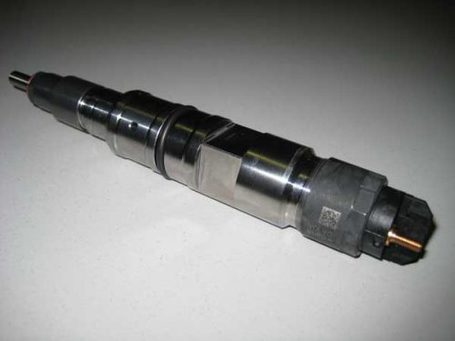One of the reasons why most of the car provides poor mileage is due to clogging fuel injector. It also decreases the performance and lowers its power as well. Fuel injectors need to be cleaned on a regular basis if your engine has to run smoothly.
We are not going to tell you to go to a professional for cleaning it. Regardless of what experiences you gained as a car driver, you can clean it all by yourself.
There are cleaner kits available in the market at a very affordable price compared to let someone else clean it for you.
Our guide will help you to clean the fuel injector quite easily.
How Do You Clean Fuel Injectors Without Removing Them: Step By Step Guide
We are going to use a fuel injector cleaner kit that has a PEA cleaning fluid in it. What polyether amine (PEA) does is, it dissolves thick carbon deposits better than other ingredients.
You will find different types of cleaner kits in the market. These cleaner kits come with a fuel injector’s cleaner canister and a hose that will attach to the injectors and fuel rail.
Step 1: First, you need to locate the layout of the fuel injectors. The layout varies depending on the engines. Take a closer look at your car engine or read through the manual to locate the injectors. You can also search online to find it.
Step 2: Head to the fuel pump. It should be on the side of the car engine. Gently pull out the injectors and detach them from the pump.
Step 3: Link the fuel return line with the fuel pump. It will make sure that the gas inside of it makes its way to the tank at the same time when you are cleaning the injectors.
Step 4: Inserting a U shape tube for funneling the gas into the tank. If you get confused, it would be better if you follow the instructions manual to disconnect the fuel injectors successfully.
Step 5: If your car has a pressure regulator, there must be a vacuum line attached to it. You need to disconnect it too. You will find the regulator behind the fuel injectors.
Step 6: There is a port attached to the rail in your engine. You need to attach the hose to the port. The directions will be in the kit’s instructions. The cleaner is flammable.
Step 7: There should not be any exposure to the fuel. That is why you must ensure that they are correctly attached.
Step 8: When the cleaner produces a burst of pressure for injecting cleaning solvent into the injectors, it will remove debris and grime as well.
Step 1: Removing the cap from the fuel tank, it will prevent building excessive pressure, which can cause combustion.
Step 9: Make sure the fuel pump is turned off and start the engine. When all the cleaning fluid is used up, the motor will stop on its own.
Step 10: The cleaner will take 5-10 minutes for cycling through the injectors and getting used up.
Step 11: Get off the fitting and hose from the fuel port and reattach the fuel power supply and regulator vacuum hose. Put the fuel cap into its place.
Step 12: it is time for testing. Start the engine. If you hear strange noises, that means there is a problem. Go for a short drive and if you find everything fine and it runs smoothly, then congrats!
If you face any problem and cannot diagnose it properly, you need to contact a professional mechanic.
Frequently Asked Questions
1. What are the fuel injectors?
The motor of your car is feed fuel through these injectors. That is why they are called fuel injectors. They soot pressurized diesel or gasoline through narrow nozzles into the car engine’s combustion chambers.
There is a specially designed nozzle that projects a tuned spray. The manufacturer engineered a fine degree to shape the spray. That is the reason why it can work optimally with specific motors.
When it is sprayed into the manifold of an intake, it grasps the optimum blend of air as well as petrol to support combustion.
2. How do the fuel injectors get dirty?
No matter how refined fuels you use in your car, they are never perfectly clean. It is because when they run through your car’s system, the soot deposits and leave carbon behind the engine.
Although most of the soot is left by the combustion chambers, still they leave a casualty of carbon deposits.
The reality is, most of the filling stations provide cars fuel supplemented with lesser additives and ethanol, which get even dirtier. Ethanol mainly leaves lots of gunk and carbon deposits behind. Diesel fuels are not clean either.
Even if you use premium fuels, you cannot skip cleaning the nozzles. These fuels have detergents, and that is why you have to spend more on them.
The difference between using premium fuels and conventional fuels is, you will need to clean less often if you use premium ones.
3. Are dirty injectors harmful to the vehicle?
The nozzles produce the spray patterns that are designed very specifically. Building up from the carbon or soot leads them to start spraying off-kilter.
Therefore, fuels cannot hit the combustion chamber in their usual way. So, there will be a drop in the car’s performance.
It causes gunked-up components which means losing horsepower, poor starting torque, lower power, and lower fuel economy.
In addition to that, clogged injectors lead some serious issues like loss of power. It will cost thousands of dollars to repair.
If your fuel injectors system is problematic, you will see the “check engine” sign. You might hear motor pings or any hesitation with the dropped-in throttle.
It will lead you to face trouble with starting, lower starting torque, and also decreased mileage.
4. How often to clean your fuel injectors?
It is highly recommended to clean the fuel injectors at least once a year. And if you do not, the carbonaceous deposits will grow and harden the layer, and it will hinder the function of the car.
But if you do not use your car that often, make sure to clean the fuel injectors when you reach the 15,000 miles’ milestone.
5. When do you need to replace the fuel injectors?
If your problem with the fuel injectors is pretty bigger than usual, then you might need to replace the entire fuel injectors. Otherwise, it will generate more problems for the engine. If you notice that your fuel injectors are malfunctioning, take the car to a professional workshop.
If you see these signs, know that it is time for replacing the fuel injectors.
- If the cylinders misfire
- If the “check engine” light turns on more often
- If there is any smoke out of it
- If the tank is full, but still the car does not start
Final Words
It is always best to prevent bad things from happening than to find the solution for them. Cleaning your car’s fuel injectors will get you rid of many hassles.
But if you come to a situation where the fuel injectors are showing signs of problems, start cleaning as soon as possible.
After reading the entire article, we hope there will be no issue for you to clean the fuel injectors with a cleaning kit.

Myself Erick R. Jackson, I am a Computer Science graduate by law but a passionately enchanted blogger by profession.
A few years back, it all started with my first blog website. It was about to deal and heal with automotive hand tools. Well, it brought me a good audience base for sure, which then dragged me out of my major and got me to sit and write, and be a blogger. Read more

